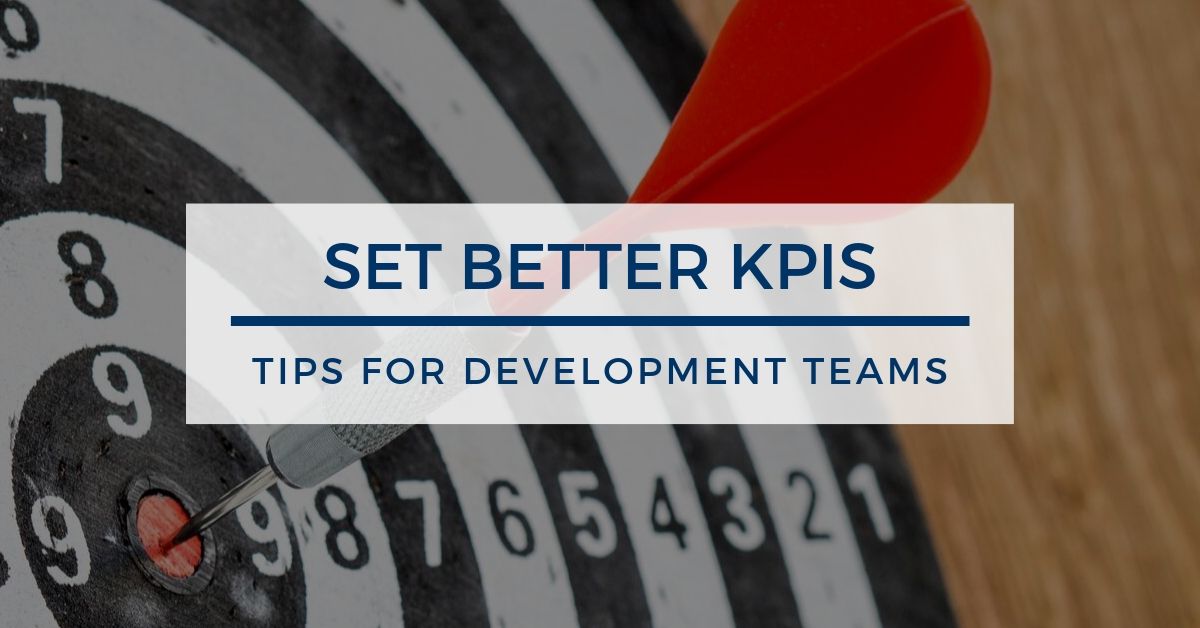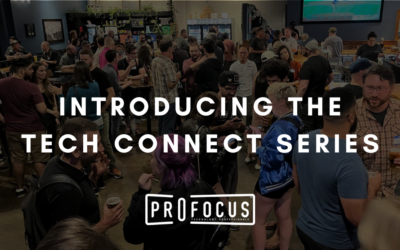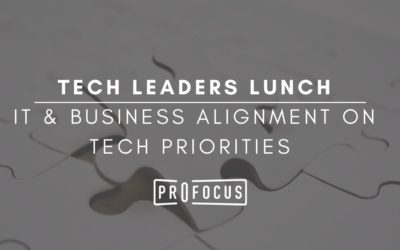If you’ve ever struggled to set KPIs for your team, you’re not alone.
When we recently sat down with a group of software development leaders to talk KPIs, these experts overwhelmingly agreed — it is very difficult to set good KPIs for development teams.
John Boone, President of ProFocus Technology, moderated this two-part discussion with Portland-based leaders. Below, we’ve rounded up the tips and resources they shared during our August 29 Leaders Lunch.
Click to read part two — Building a Development Team: How to Attract, Hire & Retain Software Developers.
What KPIs Should You Set for Your Team?
Here are some of the software development KPIs our experts suggested.
- Service Desk KPI – meeting SLA’s for time of first response.
- QBRs – The executives track KPIs for the engineering team as a whole.
- # of production incidents in the quarter.
- # of escalations – when customer facing teams get involved to escalate an issue.
- Cloud spend target.
- Retention of staff.
- Measure technical debt. If you think it is debt…tag it. Then you can get a measurement going.
- Prioritize features on a road map. Benchmark whether you are achieving the roadmap.
Approaches to Creating KPIs
The experts in our discussion suggested a number of resources and approaches that may be helpful when creating KPIs for your team.
The 5 Whys
Developed in the 1950s by Taiichi Ohno at Toyota, the 5 Whys is “the basis of Toyota’s scientific approach.” It involves digging into a problem by asking “why” repeatedly until the root cause is discovered.
Here’s an example of how the approach might be used in a Toyota plant:

via Buffer
Teams can use the 5 Whys to understand why a problem occured, and to create incremental, measurable steps to ensure it doesn’t happen again.
Quad Teams
Spotify’s Quad Team model involves breaking the engineering team into autonomous “squads.” Each team works towards a common company mission, but has the autonomy to choose their projetcts. The teams have loose boundaries or “squad missions” as well as short-term goals each quarter.
While developers want some degree of autonomy, Spotify’s model may not be for everyone, and it’s important to do your research before making drastic changes. Here’s one counterpoint article that can help give a balanced look at the approach: Don’t copy the Spotify Model. Do copy the Spotify attitude.
Google Psychological Safety Assessment
Google’s approach to building successful teams was another topic of discussion. The approach involves looking at “five key dynamics that set successful teams apart from other teams at Google.” These are:
- Psychological safety: Can we take risks on this team without feeling insecure or embarrassed?
- Dependability: Can we count on each other to do high quality work on time?
- Structure & clarity: Are goals, roles, and execution plans on our team clear?
- Meaning of work: Are we working on something that is personally important for each of us?
- Impact of work: Do we fundamentally believe that the work we’re doing matters?
Behavior-Driven Development
Behavior-driven development is a methodology for developing software that aims to improve communication amongst the stakeholders. As TechMagic explains, it was developed as a response to issues like:
- Where to start the process?
- What to test and what not to test?
- What to call the tests?
- How to understand why a test fails?
When generating KPIs using Behavior-Driven Development methodologies, the stakeholder’s objectives become the KPIs that the software engineers measure themselves against.
Use Business KPIs
Finally, the idea of using business KPIs for the development team was also suggested. This might mean giving the software team the KPI of reaching a certain speed with the application, or a certain percentage of conversions.
Whichever approach, or combination of approaches you choose, your KPI should be S.M.A.R.T. That means:
- Specific: state clearly what each KPI will measure, and why it’s important.
- Measurable: make sure the KPI can be measured, and establish how you’ll do so.
- Achievable: your KPI must be attainable.
- Relevant: your KPI should measure something of value to the organization.
- Time-Bound: the KPI is achievable within an established time frame.
For part two of our discussion, click here: Building a Development Team: How to Attract, Hire & Retain Software Developers
If you are a Software Development leader and would like to be involved in future roundtable discussions, please send an email to [email protected] with a request to be invited to upcoming Leaders Lunches.




